Top 10 Most Beautiful Historical Sites In Laos
Laos is a growing tourism destination in South East Asia, with many visitors drawn to this landlocked country by its relaxed lifestyle and breathtaking ... read more...mountainous landscapes. Explore the most beautiful historical sites in Laos, from saffron-robed monks taking alms to golden stupas.
-
Wat Phu, a World Heritage-listed temple ruins with roots dating back to the 5th century, offers history, art, and picturesque views. The mountaintop Khmer Hindu site provides spectacular views of the Mekong River and the surrounding countryside.
The ancient temple was built in the fifth century but was later destroyed; the current construction was built in the eleventh, twelfth, and thirteenth centuries. Wat Phu is modest in comparison to the gigantic Angkor monuments in Cambodia, but it is older, having been designated a UNESCO World Heritage Site in 2002.
The site's hilltop elevation provides spectacular views of the surrounding land and the Mekong River. This landscape was designed at the turn of the millennium to depict the Hindu concept of the link between nature and humanity. The site, like other significant Khmer buildings in Southeast Asia, was built using laterite, sandstone, and bricks. The site has a strong sense of craftsmanship and heritage. The extraordinary craftsmanship involved within the destroyed Khmer temple complex, particularly the spectacular carvings that grace the walls, will astound visitors.
Take note of the elaborate lintels, a cliff face Buddha footprint, and stones carved to represent elephants and crocodiles visible in the architecture and interior. As you explore the complex, you will come across a natural spring that is said to generate holy water. Wat Phu is open all year and may be reached by land or by boat along the Mekong River from Pakse.
Address: Champasak District, Champasak Town Laos
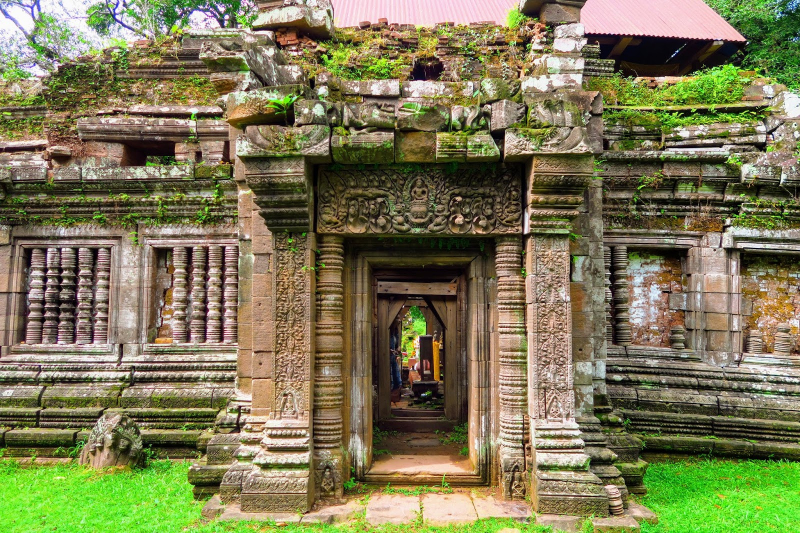
https://www.inspirock.com/ 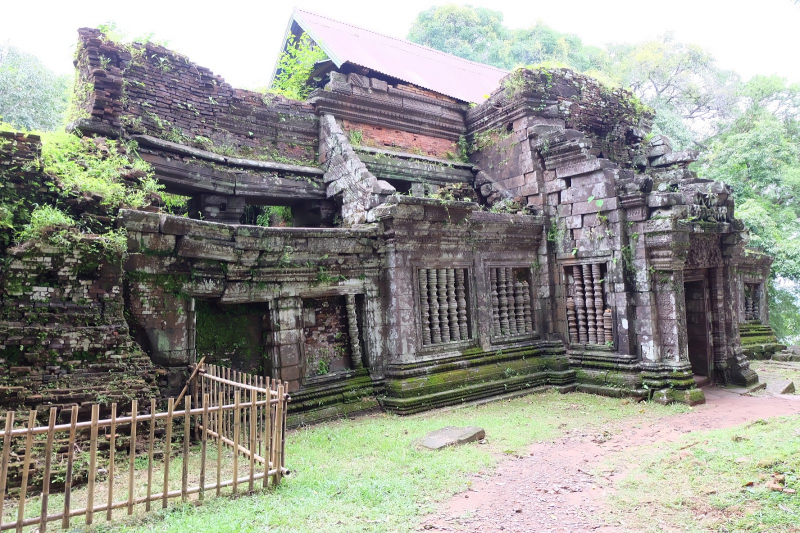
https://www.inspirock.com/ -
The Plain of Jars, located in central Laos, is one of Southeast Asia's most perplexing and misunderstood prehistoric sites. Thousands of enormous stone jars, each weighing several tons, can be found at approximately ninety locations spread across many kilometres of rolling landscape. So far, archaeologist Julie Van Den Bergh has counted almost 3,000 jars spread across 90 sites. Each jar stands up to 3 meters tall and weighs several tons. They are typically made of sandstone, but can also be made of harder granite or limestone. Despite extensive research and attempts by numerous archaeologists, the rationale and origin of the Plain of Jars remain unknown. Standing amid the jars is a dismal and disturbing experience that calls into question the boundaries of human achievement.
The site was only recently dated because to the discovery of human remains near the Plain of Jars, and archaeologists believe the jars were carved with iron tools and date back to roughly 500 BC. Several ideas exist regarding the jars' usage, with one suggesting that they originally held human remains and another claiming that they were used to collect rain water during the monsoon season. Millions of unexploded objects from the Vietnam War remain in the area, making excavation time-consuming and risky. Laos aims to become the Plain of Jars a UNESCO World Heritage Site once the hazard of explosive objects has been reduced.
However, be cautious when admiring this tranquil landscape; if you venture off the main path, the place can be exceedingly deadly. When walking between the jar locations, keep to well-worn and signposted pathways.
Address: Xiangkhoang Plateau, Laos
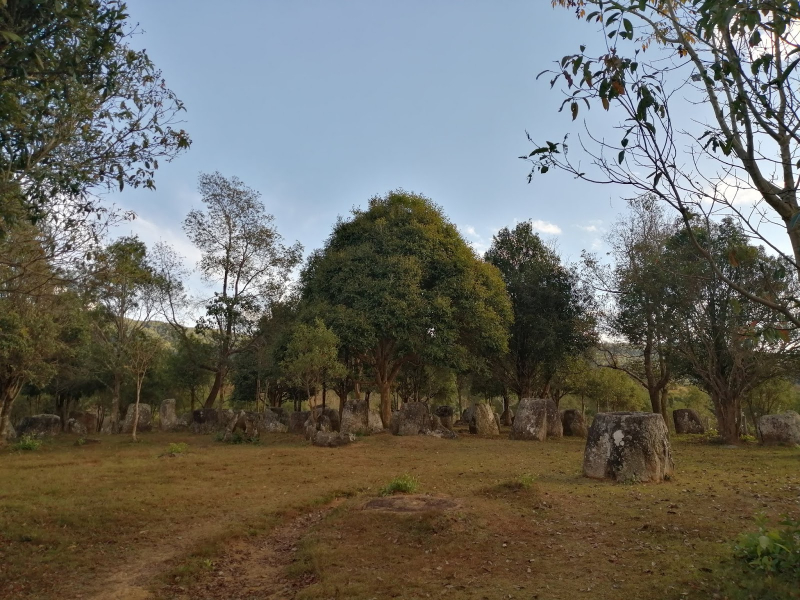
https://www.inspirock.com/ 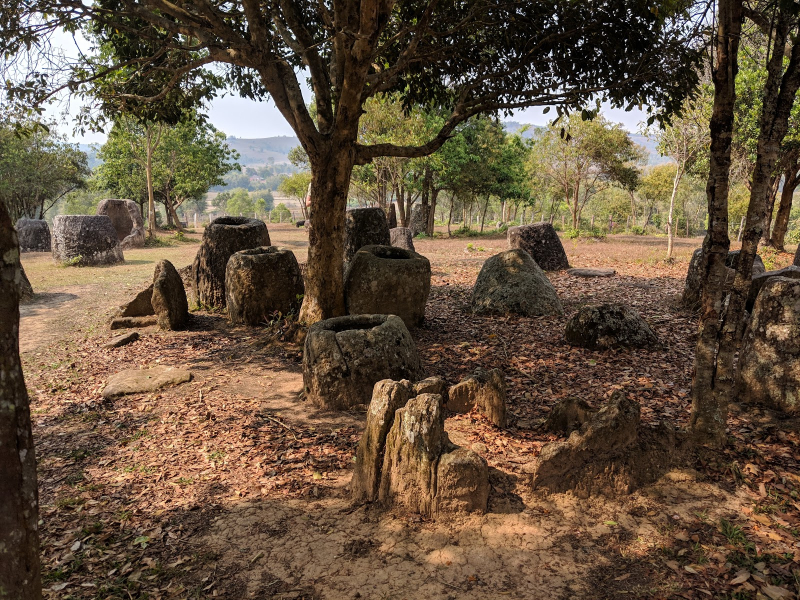
https://www.inspirock.com/ -
Great Sacred Stupa or Pha That Luang is a massive gold-covered Buddhist stupa in the center of Vientiane, Laos. Since its construction, which is thought to have begun in the third century AD, the stupa has been rebuilt multiple times, most recently in the 1930s due to foreign invasions of the area. It is widely recognized as Laos' most important national monument and a national symbol. It is also regarded as one of the most beautiful historical sites in Laos.
The structure, which is a national symbol and appears on the country's official seal, is thought to house a breast bone of Buddha sent by a Hindu missionary dispatched by King Ashoka as early as the third century CE. This most renowned national landmark includes a massive golden reclining Buddha statue and a statue of King Setthathirath, the founder of the current-day stupa built in 1566, erected in front of the main entrance. The facility is located about 4 kilometers (2.5 miles) north of Vientinane.
Address: That Luang Road, Vientiane 0100 Laos
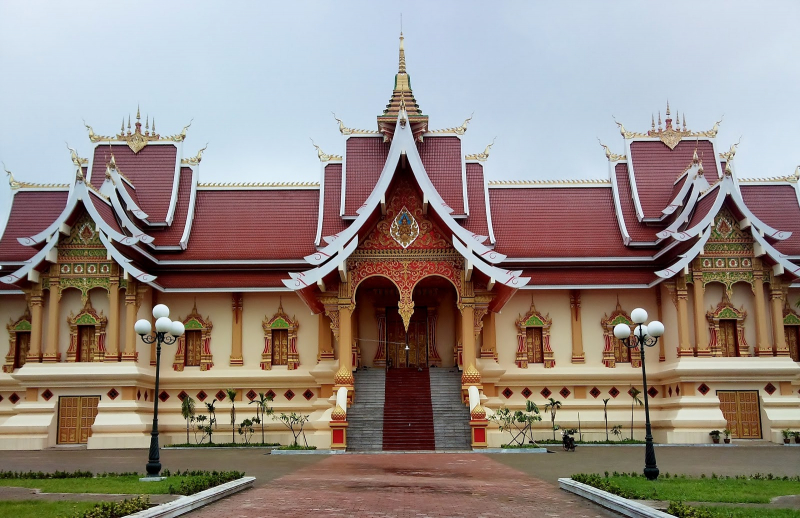
https://www.inspirock.com/ 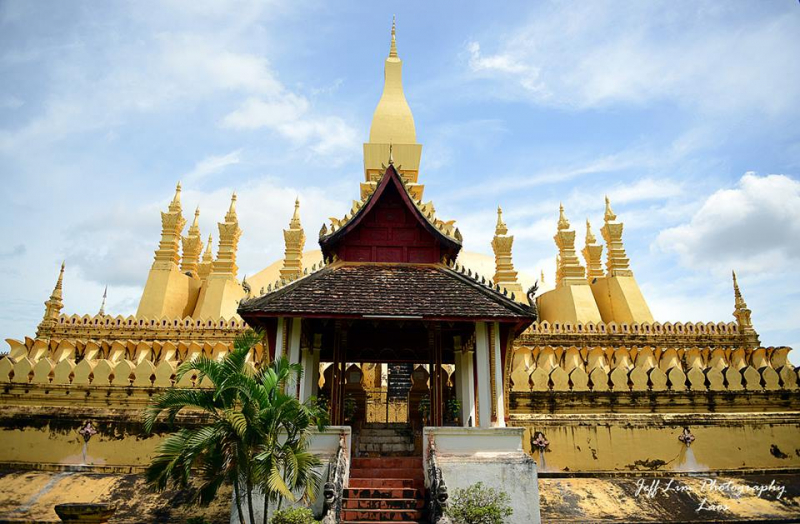
https://www.inspirock.com/ -
Wat Si Saket is a Buddhist temple in the Laotian capital of Vientiane. It is located on Lan Xang Road, near the intersection with Setthathirat Road, northwest of Haw Phra Kaew, which once housed the Emerald Buddha.
King Anouvong (Sethathirath V.) ordered the construction of Wat Si Saket in 1818. Si is derived from the Sanskrit adoration title Sri, which was added to the name of Bangkok's Wat Saket, which was renamed by Anouvong's contemporary, King Rama I. Rather than the Lao style, Wat Si Saket was built in the Siamese style of Buddhist architecture, with a surrounding terrace and an elegant five-tiered roof. This may have kept it safe, as the Siamese soldiers that devastated Vientiane in the aftermath of Anouvong's uprising in 1827 used the compound as their headquarters and housing. It may be Vientiane's oldest temple still standing. Wat Si Saket was repaired by the French colonial authority in 1924 and again in 1930.
Wat Si Saket has a cloister wall adorned with over 2,000 ceramic and silver Buddha figures. There is also a museum in the temple.
Address: Lane Xang Avenue, Vientiane, Laos
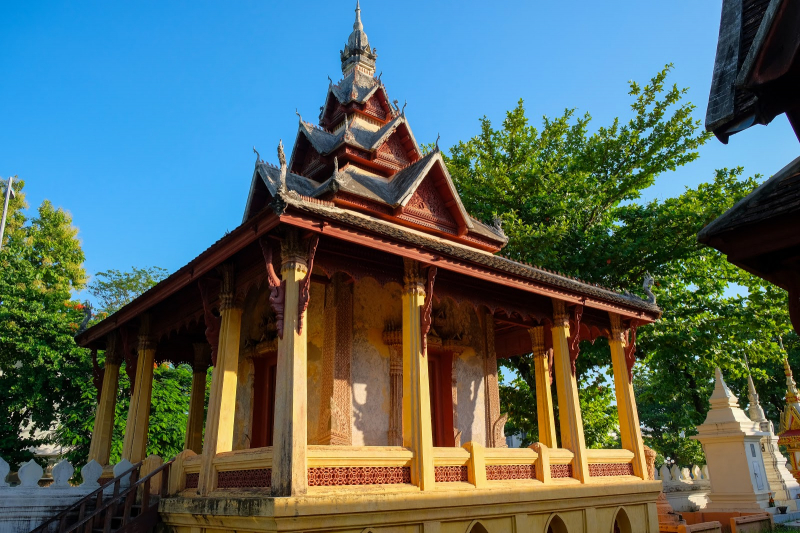
https://www.inspirock.com/ 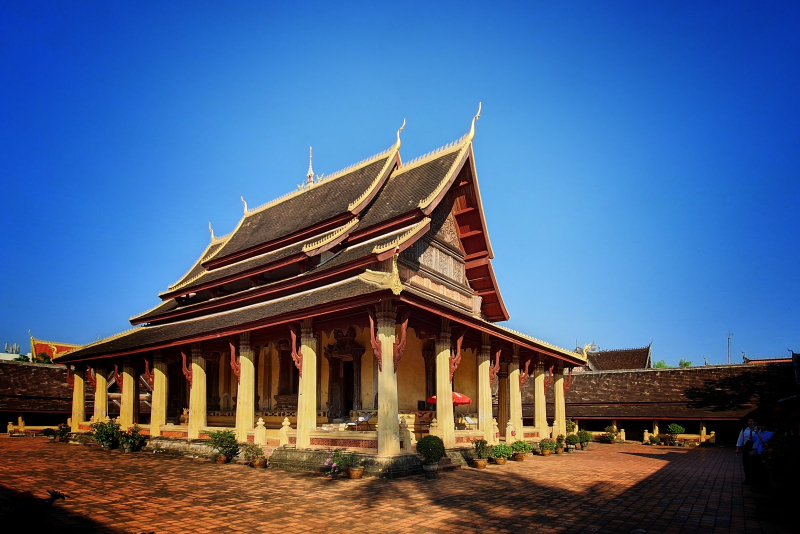
https://www.inspirock.com/ -
Among the most beautiful historical sites in Laos, Wat Ho Phra Keo is a former temple in Vientiane, Laos. It is located southeast of Wat Si Saket on Setthathirath Road. It was originally constructed in 1565 to hold the Emerald Buddha, but has since been restored multiple times. The inside presently houses a religious art museum and a modest shop.
Wat Ho Phra Keo houses Laotian religious art as well as writings on dried leaf. Despite being renovated, the temple resembles the old and is built in the 19th century Bangkok architectural style. Witness a 2,000-year-old stone used in funeral ceremonies in the yard. The entrance features Naga, a mythical snake. The terraces are lined by a long series of stone Buddha statues, some of which date from the 6th to 9th centuries. The gathering hall is accessed through two carved wooden doors. The journey then continues to the gilded seat, where the Emerald Buddha formerly sat.
Address: Rue Setthathirath, Vientiane 0100 Laos
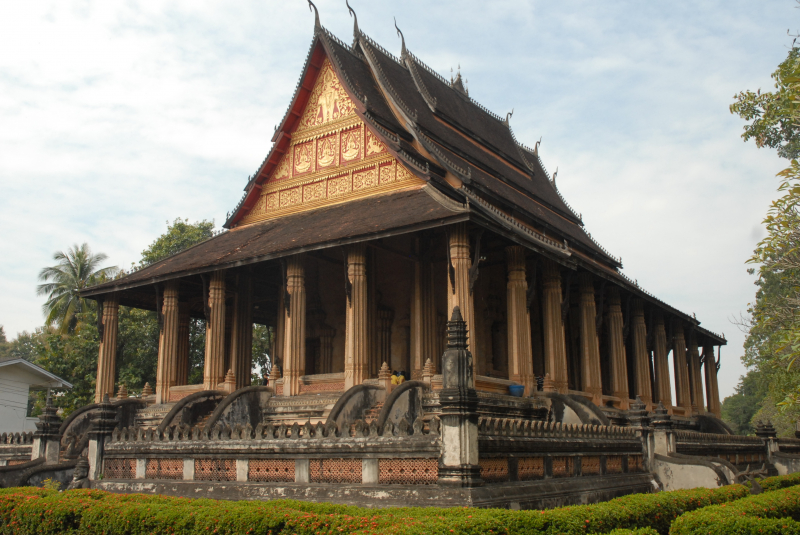
vi.wikipedia.org 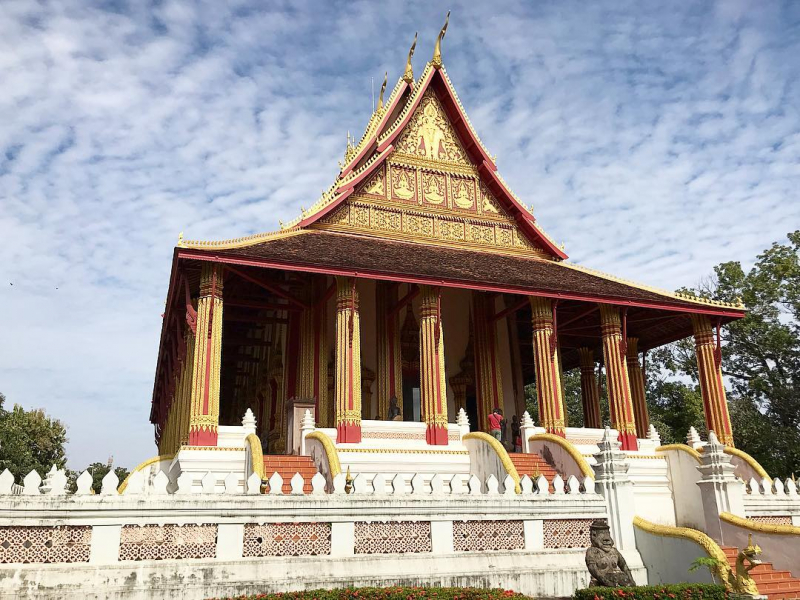
cattour.vn -
Wat Mai Suwannaphumaham, also known as Wat Mai or Wat May, is a Buddhist temple in Luang Prabang, Laos. It is the largest temple in Luang Prabang and was built around the turn of the 18th century. Wat Mai Suwannaphumaham is regarded as one of the most beautiful historical sites in Laos you should visit.
Admire Wat Mai Suwannaphumaham, an ornately decorated early 19th-century temple that was allegedly too lovely for the invading Chinese to destroy. The ornate structure is dripping in gold, with black pillars painted in an aureate pattern and a massive golden relief on the exterior telling the story of the Buddha's ultimate incarnation as Vessentar. Exploring the red ochre interior will reveal a plethora of Buddha statues, including a big golden depiction surrounded by several smaller copies. Keep in mind that shoes must be removed when within the temple, although photography is permitted, so bring your camera.
Address: Luang Prabang, Laos
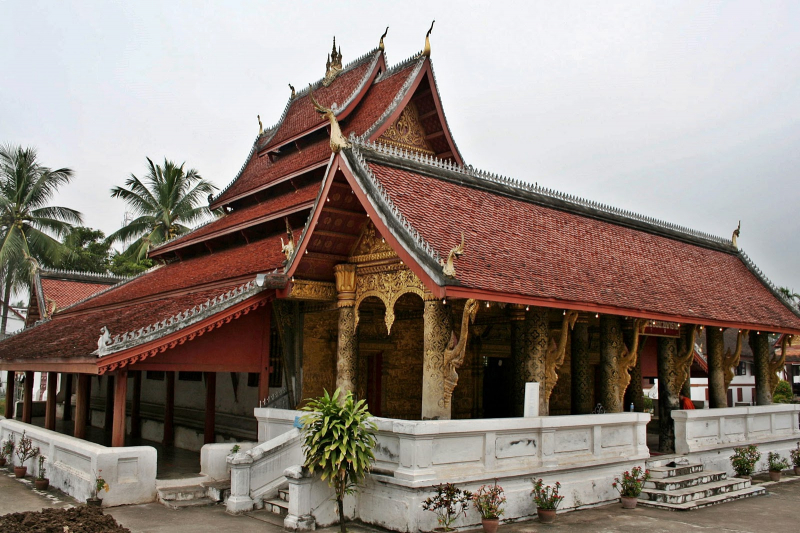
https://www.inspirock.com/ 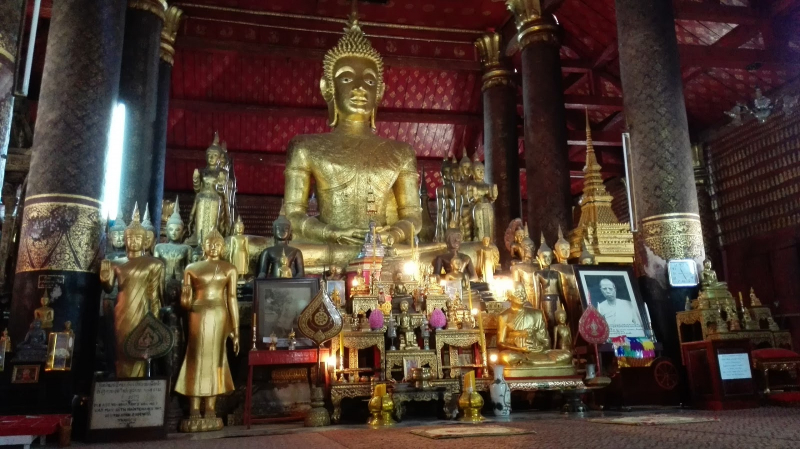
https://www.inspirock.com/ -
Wat Si Muang or Simuong is a Buddhist temple in Vientiane, Laos' capital. The temple was established in the ancient Kingdom of Lan Xang around 1563. In front of Wat Simuang is a statue of King Sisavang Vong. According to mythology, pregnant women were sacrificed to God during the construction period.
The temple's interior is distinctive in that it is separated into two rooms. The front room is normally peaceful, with a monk on hand to administer blessings. The massive main altar, with sculptures and images of the Buddha, is located in the back room.
Travelers may find good fortune at Wat Si Muang, a wooden worship temple noted for its good luck, which draws tourists to make a wish. If the request is granted, individuals return to the temple to bring gifts and express gratitude for their wish being granted. Intricate features and carvings adorn both the inside and outside of the structure, and the golden color of the walls helps it stand out from the crowd. Don't miss the golden Buddha statue in the yard in front of the temple, which sits under a tree.
Address: 15 Rue Bourichane, Vientiane, Laos
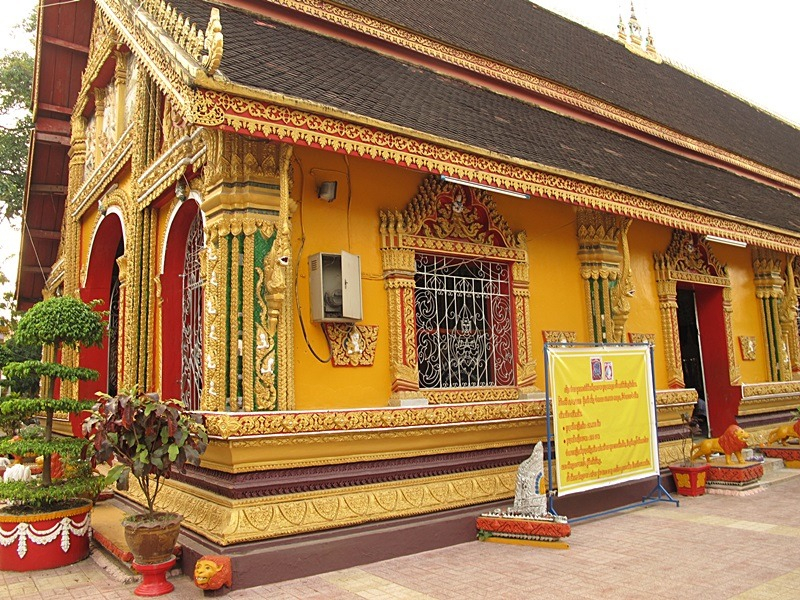
https://www.inspirock.com/ 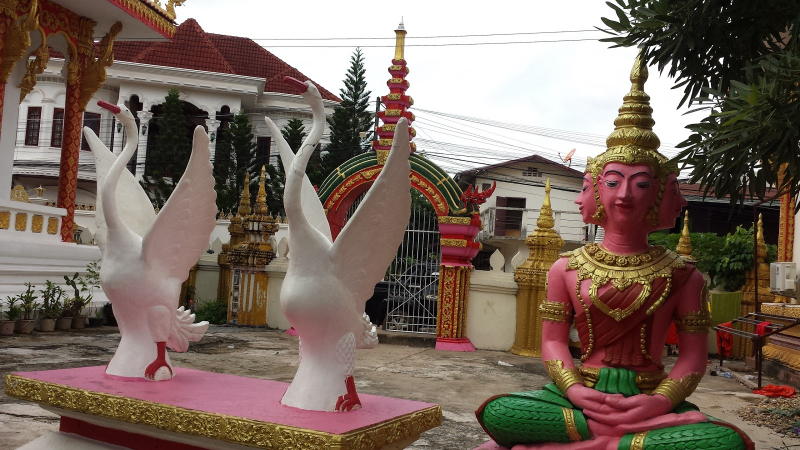
https://www.inspirock.com/ -
Wat Sen, Luang Prabang, also known as Wat Sensoukharam, is a Buddhist temple (wat) in the Laotian city of Luang Phrabang. Wat Sensoukharam is located on Sakkarin Road, which runs parallel to the Mekong River in the old town of Luang Prabang. You can't miss it if you go west from Phou Si and the Royal Palace. King Kitsarath erected it in 1718 with 100,000 Mekong river stones. It directly translates as "Temple of 100,000 Treasures." It was renovated in 1957 to commemorate the birth of the Buddha 2500 years previously.
Wat Sensoukharam invites you to witness traditional Buddhist rites firsthand. Inside, see the gold-accented crimson walls. A local audience comes here in the afternoon to witness the monks' chanting, which draws a large number of tourists every day.
The temple is one of Luang Prabang's largest monasteries, with numerous buildings to examine. The outside, together with the other adjacent buildings such as the Chapel of the Standing Buddha, is pretty impressive on its own.
Address: Sakkarine Road, Luang Prabang 0600 Laos
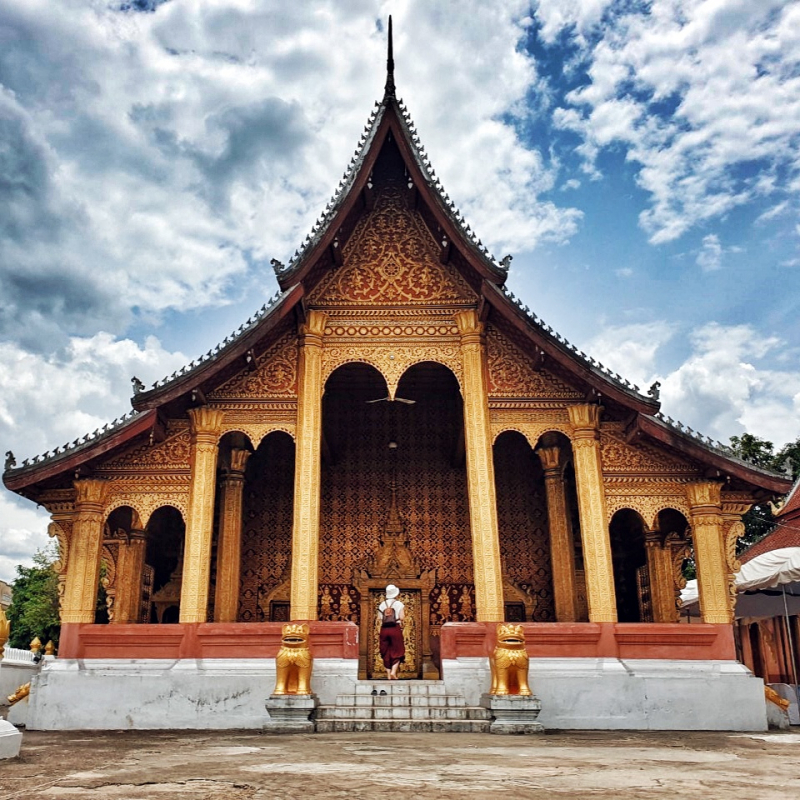
https://www.inspirock.com/ 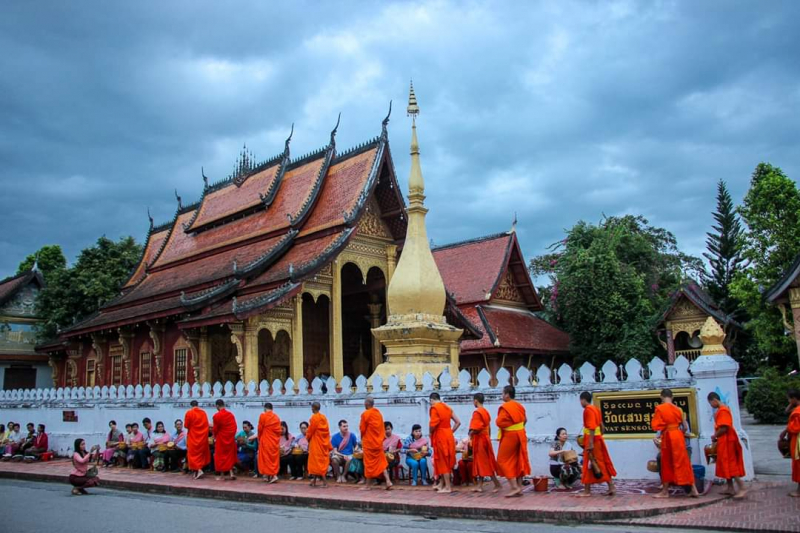
https://www.inspirock.com/ -
Vat That Khao, also known as Wat That Khao, is a Buddhist temple in Vientiane, Laos. It is situated on Fa Ngum Quay, across from the Royal Park and Don Chan Palace. It's close to Vat Phiavat, Vat Si Meuang, and the King Sisavang Vong Monument. That Khao is thought to be a lovely and wonderful reclining in the form of the largest Buddha in Lao. It is not, however, considered as large as the Wat Pho in Bangkok (Wat Pho is a Buddhist temple complex in the Phra Nakhon District, Bangkok, Thailand).
However, unlike the Wat Pho in Thailand, where there are several tourist attractions that almost entice travelers to visit, this location lacks such tourist attractions. This location is well-known for its Buddhist temple, which is located across the street in Royal Park. Tourists are claimed to be drawn to this location solely because of the Buddhist temple that is located right there and is famous for it.
Address: Vientiane, Laos
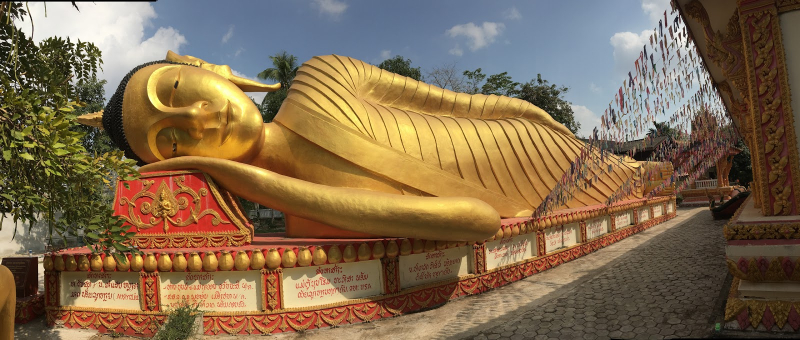
https://www.inspirock.com/ 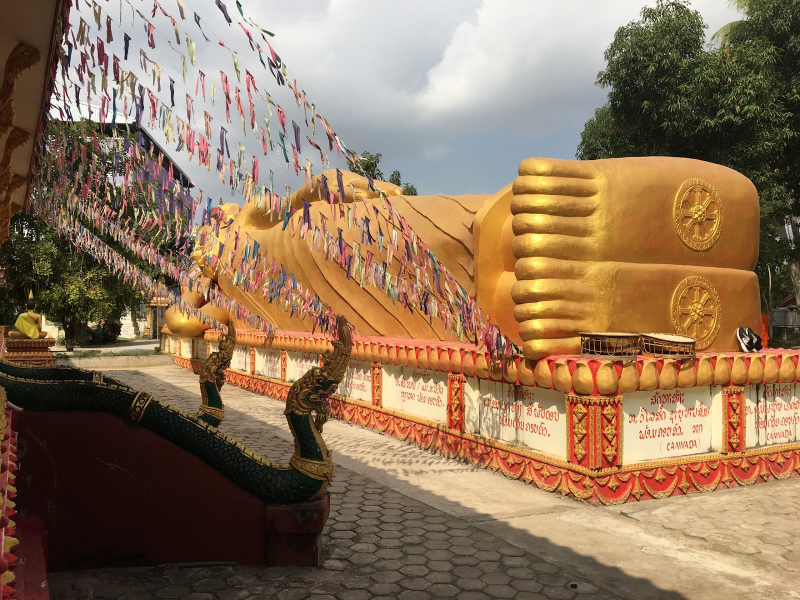
https://www.inspirock.com/ -
Among the most beautiful historical sites in Laos, this temple in the heart of town is quite serene. You may enjoy the numerous ornamental pieces of work, particularly the paintings, stencilling and woodwork, gilding, and countless depictions of Buddha.
According to Denise Heywood, this monastery was founded by a Phragna Sisonxay during the time of King Chantarath (r. 1851-72). The name 'Sieng Mouan' means 'Melodious Sounds,' a reference to the wat's unusually harmonic drums at the time. The wat is now the site of a 'Cultural Survival Project,' which intends to educate traditional mural painting, wood carving, bronze casting, and other traditional trades with the emphasis on preserving these cultural practices, according to a signboard at the site.
Visitors can see a beautifully painted and visually impressive Buddhist temple at Wat Xieng Mouane, which has a distinctive design filled with paintings depicting Buddha's life. The monastery, which was founded in 1879, operates a UNESCO-funded training program for young monks, teaching woodcarving, painting, and Buddha-casting in order to assist maintain the region's temples. Look for the structure's prominent pillars supporting the front porch area, and don't miss the site's showroom, which shows and sells handmade works by local monks.
Address: 101 Kounxoau Rd, Luang Prabang, Laos
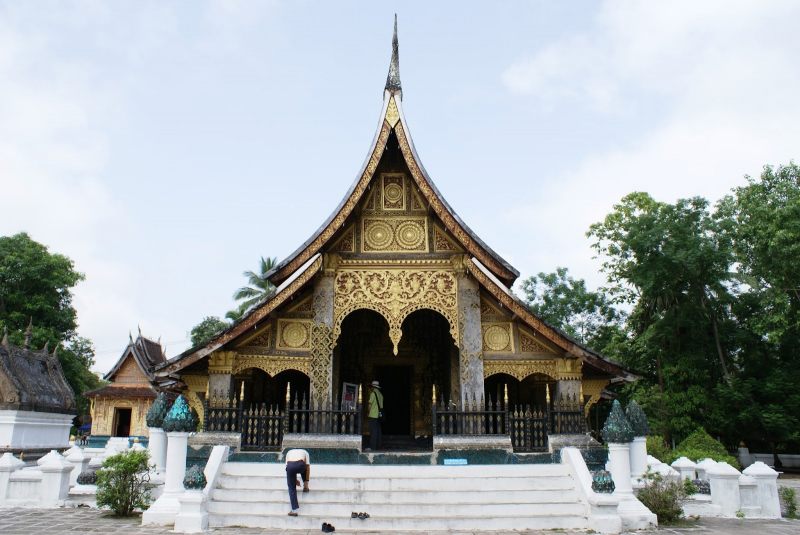
https://www.inspirock.com/ 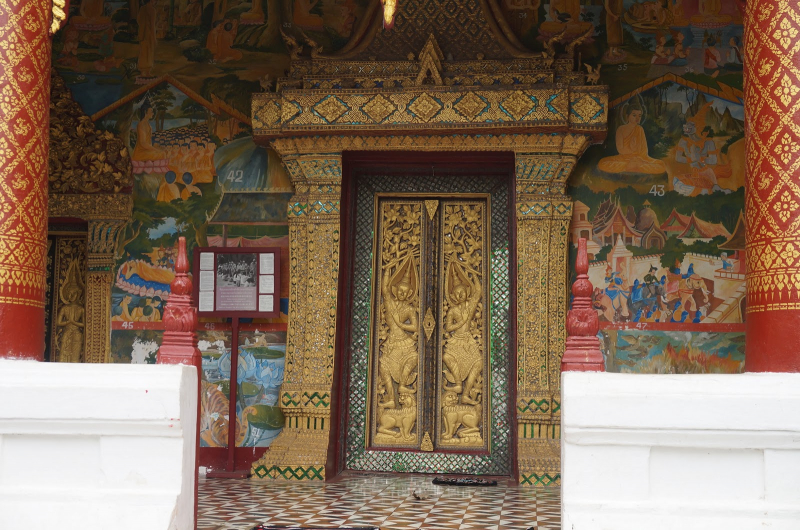
https://www.inspirock.com/































